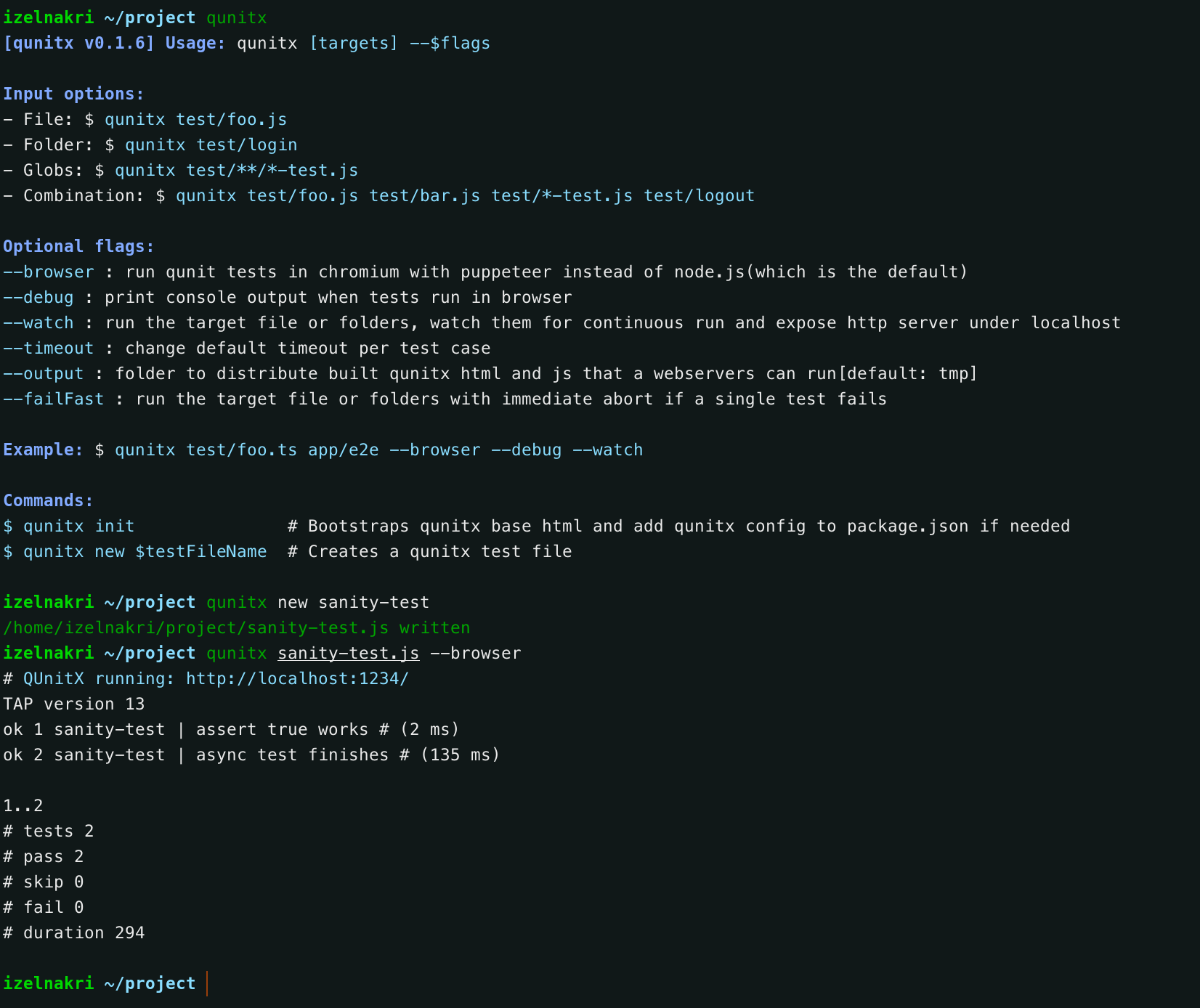qunitx-cli
v0.1.2
Published
Browser runner for QUnitx: run your qunitx tests in google-chrome
Maintainers
Readme
QUnitX CLI
CI browser runner for qunitx

Default test output is TAP (Test-Anything-Protocol) thus you can use any tap reporter of your choice to display test output in anyway you like. Example:
# using it with tap-difflet TAP reporter:
qunitx tests/attachments tests/user | npx tap-diffletInstallation:
npm install -g qunitx-cli
qunitxIn order to use qunitx to execute existing qunit tests please change:
import { module, test } from 'qunit';
// to:
import { module, test } from 'qunitx';Example:
// in some-test.js: (typescript is also supported for --browser mode and node.js with --loader flag)
import { module, test } from 'qunitx';
import $ from 'jquery';
module('Basic sanity check', function (hooks) {
test('it works', function (assert) {
assert.equal(true, true);
});
module('More advanced cases', function (hooks) {
test('deepEqual works', function (assert) {
assert.deepEqual({ username: 'izelnakri' }, { username: 'izelnakri' });
});
test('can import ES & npm modules', function (assert) {
assert.ok(Object.keys($));
});
});
});# you can run the test in node with ES modules package.json{ "type": "module" }
$ node --test some-test.js
# Suggested mode: if you want to run it in CI/google chrome:
$ qunitx some-test.js
# with browser output enabled:
$ qunitx some-test.js --debug
# TypeScript also works, make sure on node.js mode, tsconfig.json exists with compilerOptions.module & compilerOptions.moduleResolution set to "NodeNext":
$ node --loader=ts-node/esm/transpile-only --test some-test.ts
$ qunitx some-test.ts --debug
Code coverage
Since QUnitX proxies to default node.js test runner in when executed with node, you can use any code coverage tool you like. When running the tests in qunit(the browser mode) code coverage support is limited.
c8 node test/attachments test/userYou can browse c8 documentation for all configuration options.
Implementing code coverage for the browser mode is currently not possible because we use esbuild --bundle feature to
create a JS bundles for testing in the browser, this could be instrumented with puppeteer-to-istanbul however
instrumentation includes transpiled npm imports of qunitx and other potential npm imports developer
includes in the code, this cannot be filtered since potential filtering can only occur after the esbuild bundling.
When chrome browser and puppeteer fully supports ES asset maps we can remove esbuild from the browser mode, run
everything in deno and make instrumentation for code coverage possible with the default v8 instrumentation.
Esbuild plugin interface is an ongoing development, we might be able to figure out a way to generate this instrumentation with esbuild in the future, which could allow code coverage for --browser mode.
